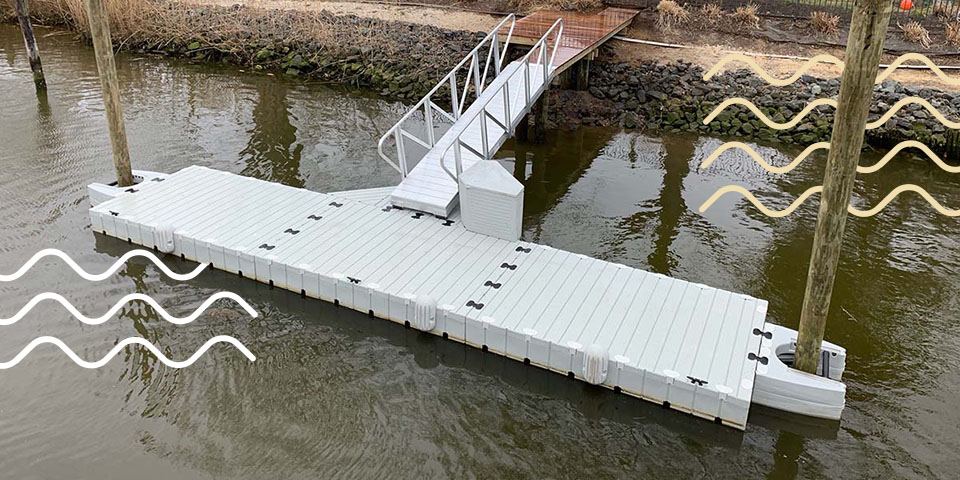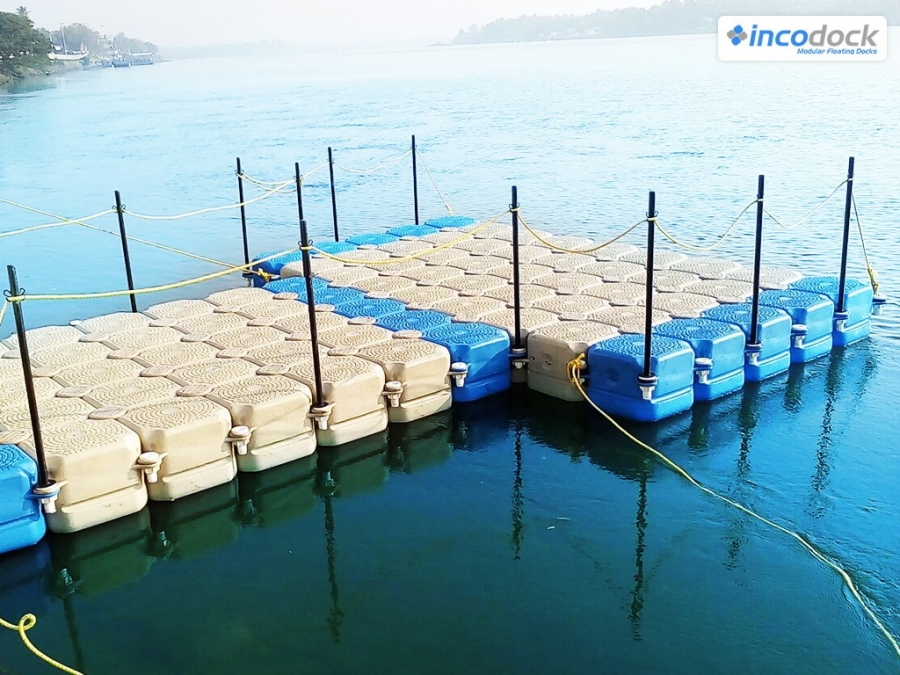Find the Perfect Floating Dock Builder to Bring Your Waterfront Vision to Life
Find the Perfect Floating Dock Builder to Bring Your Waterfront Vision to Life
Blog Article
Create the Perfect Docking Service With Floating Docks
Floating docks existing a functional option for a range of maritime demands, adapting seamlessly to rising and fall water levels and diverse vessel kinds. As we explore the essential aspects that add to the effectiveness of floating docks, numerous key factors concerning stability and upkeep will emerge, elevating inquiries regarding how to enhance your docking experience.

Advantages of Floating Docks
Floating docks deal various benefits that make them an excellent selection for various maritime applications. One of the main benefits is their adaptability to transforming water degrees. Unlike dealt with docks, floating docks surge and fall with the trend, guaranteeing constant availability for vessels. This attribute is specifically important in locations susceptible to significant tidal variations or seasonal water level adjustments.
Furthermore, floating docks are commonly much easier and quicker to install compared to traditional set frameworks. Their modular style allows for simple setting up and disassembly, helping with maintenance and relocation when essential. This adaptability is especially beneficial for short-lived applications or in atmospheres where conditions may alter.
Floating docks also tend to be much more eco friendly, as they lessen interruption to the seabed and bordering aquatic ecological communities. Their resilient nature decreases the risk of damage to aquatic life, advertising a healthier setting. These docks can be personalized to suit numerous vessel dimensions, guaranteeing that they meet details operational demands.
Eventually, the mix of adaptability, convenience of setup, and environmental considerations makes floating docks a very efficient remedy for a wide variety of maritime requirements.
Picking the Right Products
Picking the ideal products for floating docks is vital to ensure security, resilience, and longevity. The option of materials directly impacts the dock's efficiency in numerous ecological problems, including exposure to water, sunlight, and prospective wear from aquatic web traffic.
Usual products utilized for floating docks include light weight aluminum, wood, and high-density polyethylene (HDPE) Light weight aluminum is lightweight, corrosion-resistant, and needs very little maintenance, making it an excellent option for durability. Its preliminary cost can be higher contrasted to various other products.
Timber, while visually attractive and offering a standard look, can be vulnerable to rot and insect damage if not effectively dealt with. For that reason, making use of pressure-treated timber or normally long lasting varieties like cedar or redwood can mitigate these problems.
HDPE is a preferred selection because of its resistance to UV rays and chemicals, together with being eco-friendly. floating docks. It is readily available and lightweight in various shades, enabling customization
Eventually, the appropriate product choice will certainly depend on details demands, consisting of spending plan, wanted looks, and ecological factors to consider. Careful assessment of these factors will certainly lead to a effective and durable floating dock option.
Layout Considerations for Security
When creating floating docks, making certain security is a basic aspect that can substantially impact their functionality and safety. Stability in floating dock design is affected by various elements, including buoyancy, weight distribution, and the plan of components. An optimum buoyancy system should utilize products that supply enough lift while reducing weight. This equilibrium makes certain that the dock stays above water, also under varying loads.
Weight circulation is essential; uniformly distributing tons across the dock avoids tilting and boosts security. This can be achieved with strategic placement of docking equipment, such as cleats and fenders, in addition to correct spacing check out this site of drifts. In addition, the measurements of the dock need to be attentively planned. Larger styles can use raised stability, specifically in harsh water conditions, while longer docks may need added assistances to avoid drooping.
Another key consideration is the environmental influence, including wave activity and wind. Integrating attributes such as sidewalls or skirting can assist alleviate the effects of environmental pressures, keeping security in unfavorable conditions. Inevitably, a combination of thoughtful design, material selection, and understanding of ecological elements will produce a floating dock that meets both stability and security requirements.
Installment Tips and Techniques

Next, safeguard the necessary licenses and abide by local guidelines, which may determine installation approaches and environmental factors to consider. Involve a qualified service provider experienced in floating dock setups if required. Usage top notch products developed for aquatic environments to improve durability and longevity.
When placing the dock, align it parallel to the coastline to assist in simple access. Ensure that the anchoring system is robust, using concrete blocks or helical supports to support the dock versus wind and wave action. It's vital to represent seasonal water degree fluctuations, consisting of prospective ice motion in cooler climates.
Throughout the installment, double-check the dock's floatation and security prior to wrapping up the anchoring. Routinely inspect the installment why not try these out for any kind of indications of wear or damages. By following these suggestions and methods, you can attain a protected, practical, and aesthetically pleasing floating dock installation that satisfies your needs.
Upkeep and Treatment Guidelines
Caring and maintaining for floating docks is critical to prolonging their life expectancy and making certain safe use. Normal evaluations must be carried out to recognize any kind of indicators of wear, damage, or aquatic development. Look for cracks, loosened fittings, or stained areas on the dock's surface area, as these problems can jeopardize architectural stability.
Cleaning up is necessary. Make use of a stress washer to remove algae, barnacles, and debris, which can accumulate over time. For persistent growth, take into consideration eco-friendly cleansing representatives that won't harm marine life.
Furthermore, check the mooring lines and supports often to guarantee they are secure and cost-free from rust. Replace any frayed or damaged lines immediately to keep stability.
Throughout severe climate, such as tornados or freezing conditions, take preventive actions. Protect the dock with added mooring lines and, if possible, get rid of any type of detachable components to stop redirected here damage.
Final Thought
Finally, the application of floating docks presents a functional and efficient docking solution suitable for various maritime applications. Their adaptability to varying water degrees, integrated with a modular design, permits easy personalization and moving. Picking suitable products enhances both sturdiness and visual appeal, while cautious consideration of security makes sure security and longevity. With proper installation and normal upkeep, floating docks can offer trusted and reliable docking experiences for a large range of vessels.
As we check out the crucial components that contribute to the performance of floating docks, a number of vital variables concerning stability and upkeep will arise, elevating concerns regarding exactly how to optimize your docking experience. Unlike repaired docks, floating docks rise and loss with the trend, making certain regular availability for vessels.When designing floating docks, making certain stability is a basic aspect that can significantly affect their functionality and security. Stability in floating dock style is affected by various factors, consisting of buoyancy, weight circulation, and the arrangement of elements. Ultimately, a mix of thoughtful style, material option, and understanding of environmental factors will yield a drifting dock that fulfills both security and safety requirements.
Report this page